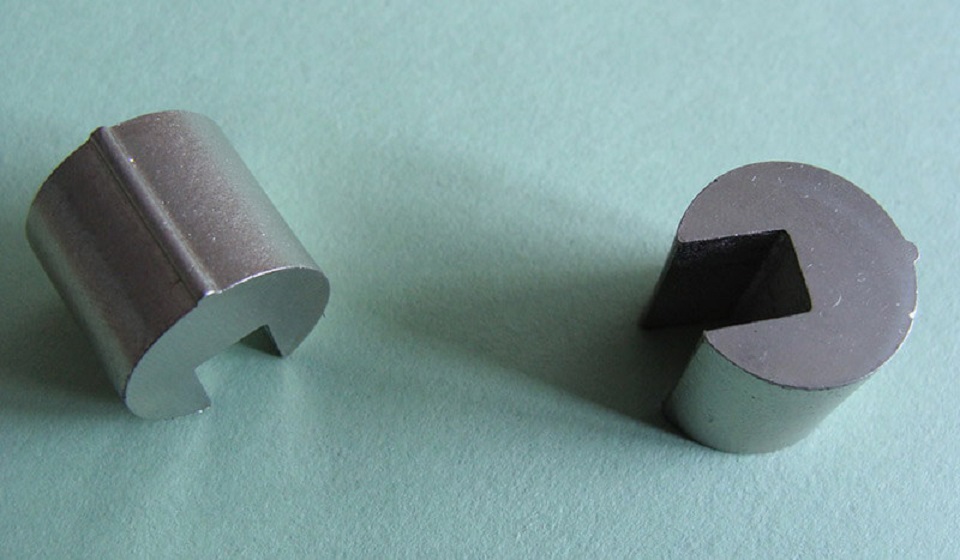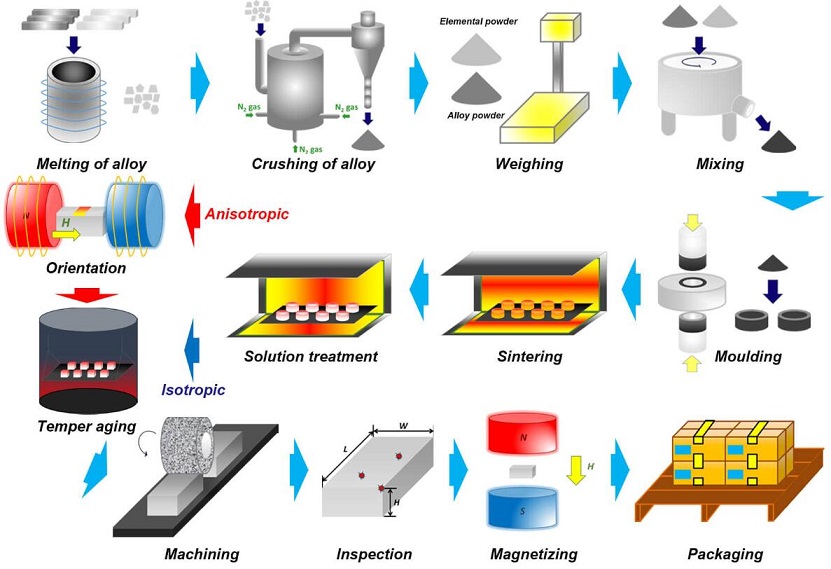Advantages and Applications of Sintered AlNiCo Magnets
After being discovered by Tokushichi Mishima in 1931, AlNiCo magnets have received a lot of attention. Due to their many advantages, AlNiCo magnets still occupy an important position in the applications of permanent magnets. According to different production processes, ALNICO Magnets can be divided into Sintered AlNiCo Magnets and Cast AlNiCo Magnets. In this article, let's take a look at the advantages and applications of Sintered AlNiCo Magnets.
 Advantages and Applications of Sintered AlNiCo Magnets
Advantages and Applications of Sintered AlNiCo Magnets
Before diving into our article, let's take a look at the manufacturing process of sintered AlNiCo magnets. Compared with Cast AlNiCo magnets, the magnetic properties of Sintered AlNiCo magnets are lower, but the manufacturing process of Sintered AlNiCo magnets is simpler.
 Manufacturing Process of Sintered AlNiCo Magnets
Manufacturing Process of Sintered AlNiCo Magnets
Advantages of Sintered AlNiCo Magnets
- The use temperature of the Sintered AlNiCo magnets can be as high as 450-500 degrees Celsius. Besides, they come with a small magnetic output change and temperature change among the permanent magnets.
- Although the magnetic properties of sintered AlNiCo magnets are slightly lower than those of the cast AlNiCo magnets, their mechanical properties are much better.
- The size and dimensional tolerances of Sintered AlNiCo Magnets are relatively smaller than those of cast magnets and do not require much further processing.
- Sintered AlNiCo Magnets are suitable for mass production.
- Sintered AlNiCo Magnets have excellent corrosion resistance.
Applications of Sintered AlNiCo Magnets
Alnico permanent magnets are mainly composed of aluminum, nickel, cobalt, iron, copper, titanium, and other materials. Newly developed application areas of AlNiCo magnets: Hall components for temperature sensors and electronic sensors for automobiles. Traditional applications of Alnico Magnets include magnetrons, TWT amplifiers, regulators, motors, and meters. Rare earth permanent magnets have replaced Alnico magnets in many application fields.
Conclusion
Thank you for reading our article and we hope it can help you to have a better understanding of the advantages and applications of Sintered AlNiCo Magnets. If you want to learn more about AlNiCo Magnets, we would like to advise you to visit Stanford Magnets for more information. As a leading magnet supplier across the world, Stanford Magnets has been involved in R&D, manufacturing, and sales of magnets since the 1990s. It provides customers with high-quality permanent magnets like SmCo magnets, neodymium magnets, AlNiCo magnets, and ferrite magnets (ceramic magnets) at a very competitive price.














